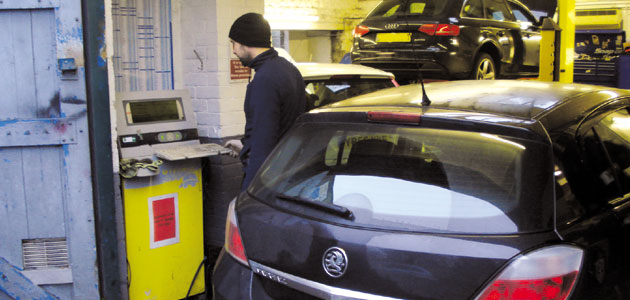
Although the humble 4 gas analyser is seen as an essential tool to carry out an MOT, I’m still surprised at how little information is retrieved by the technician after completing an emissions test, to aid with fault diagnosis.
The problem is that the MOT only requires values of CO and HC plus a Lambda reading. For example if the reading of CO was 0.35, HC at 123ppm, and Lambda is 0.99 at 2,500 rpm, this would constitute an emissions failure.

Short-term solution
From those results you could conclude that, because the CO is too high, the Catalytic Converter needs replacing because it is not working effectively. Technicians often resolve this situation by fitting a new cat.
Although that particular solution could reduce the CO to 0.2, as the new cat will be working at 100% (for a few weeks at least), enabling the vehicle to pass the emissions section of the MOT, this is only a short term fix. The reason being is that the CO and HC values will only reduce for a short period of time and experience suggests that there is a problem that needs to be corrected before the new cat becomes damaged.
Luckily locating and solving these problems is a fairly simple and straightforward process.
Two brings you extra
Firstly, you’ll need a report from your 4 gas analyser showing the 4 gas values of CO, CO2, HC, O2, as well as a Lambda reading.
The two values that are missing from the MOT test are CO2 and O2, yet these are extremely important in assisting a diagnosis of any emissions fault. We simply add the two missing figures of CO2 @ 13.6 and O2 @ 0.56 to our earlier MOT test report (CO @ 0.35, HC @ 123PPM and Lambda @ 0.99) and it is now possible to diagnose the fault.
The ideal O2 value should be less than 0.2, but our example is too high at 0.56. This is usually the result of a small hole, damaged gasket or failed exhaust manifold gasket and could result in air being sucked into the exhaust system before the first Lambda sensor.
This information is fed back to the ECU and, assuming that the engine is running lean due to the extra O2, it will adjust the fuel mixture to the correct ratio of 1 part petrol to 14.7 parts air (Lambda). This will make the mixture richer, resulting in an excess of HC and CO, thus causing unnecessary damage to the Catalytic Converter.
The air leak needs to be found and repaired immediately.
Final recommendations
We recommend that you print and analyse a 4 gas report when carrying out an MOT emissions test. By repeating the process when fitting a new Catalytic Converter, it provides an ideal opportunity to locate a number of emissions faults.
THE IDEAL 4 GAS VALUES ARE:
CO <0.2%; CO2 >13.5%; O2 <0.2%; HC <15PPM; LAMBDA between 0.99 & 1.01 @ 2,500 rpm









